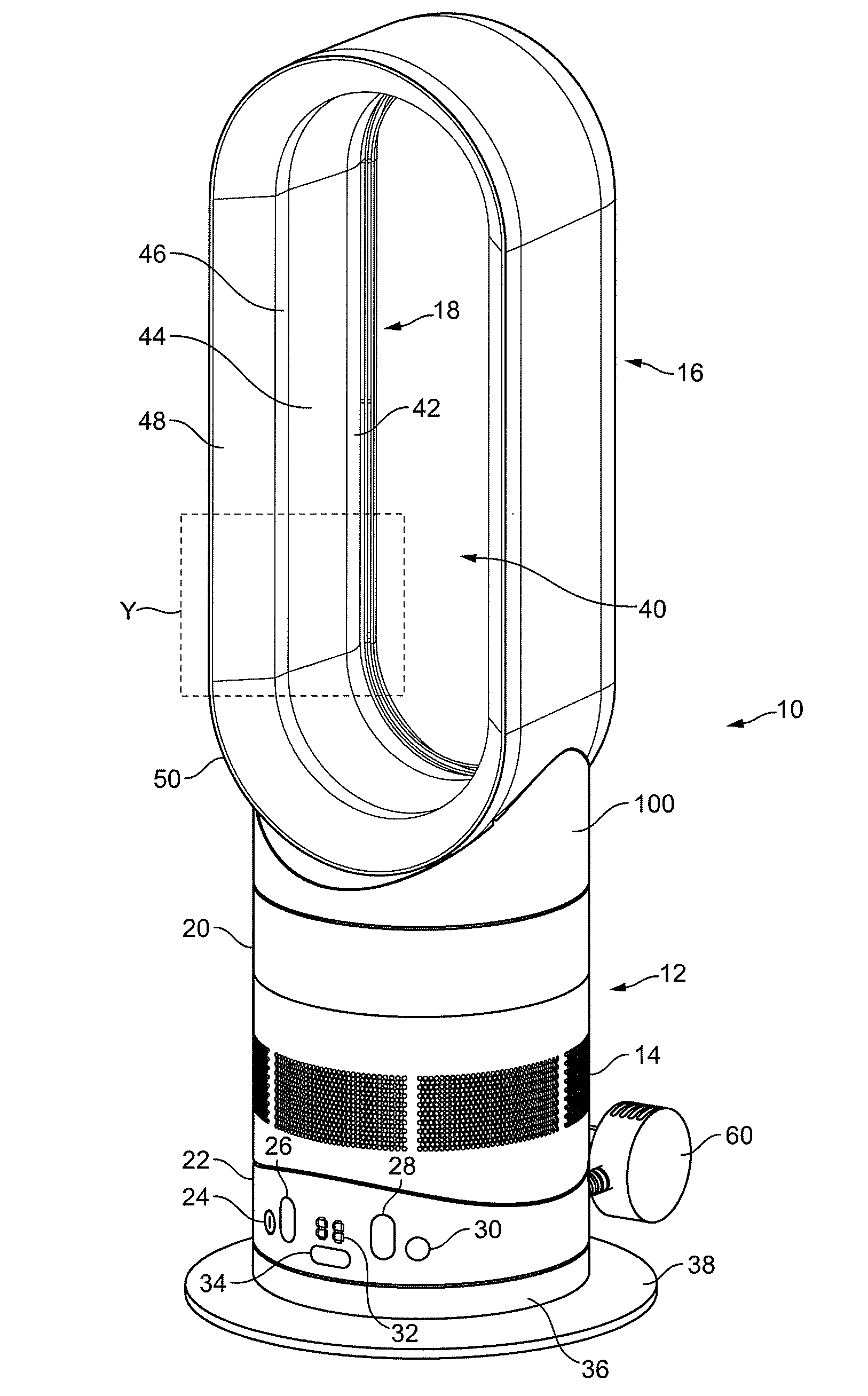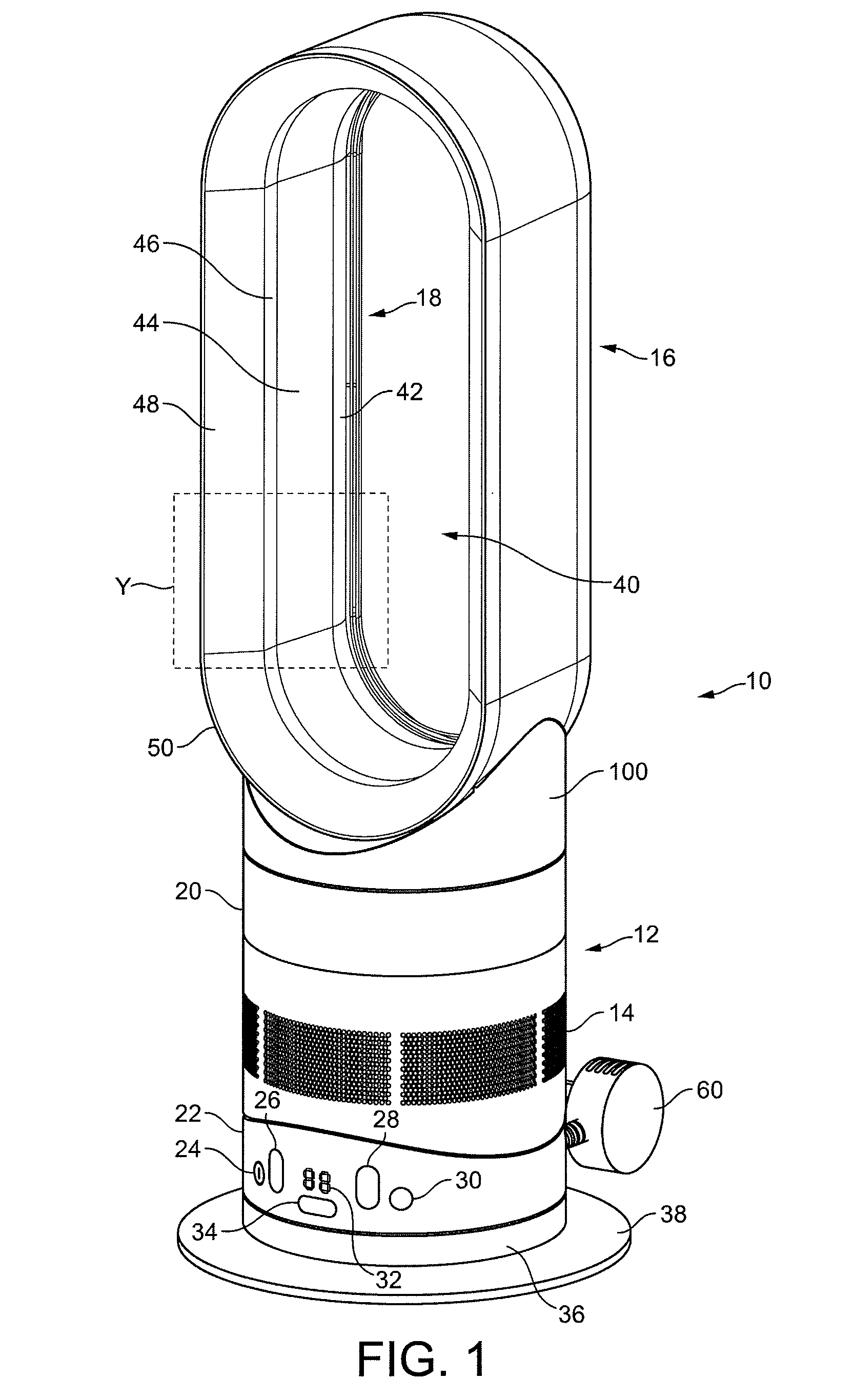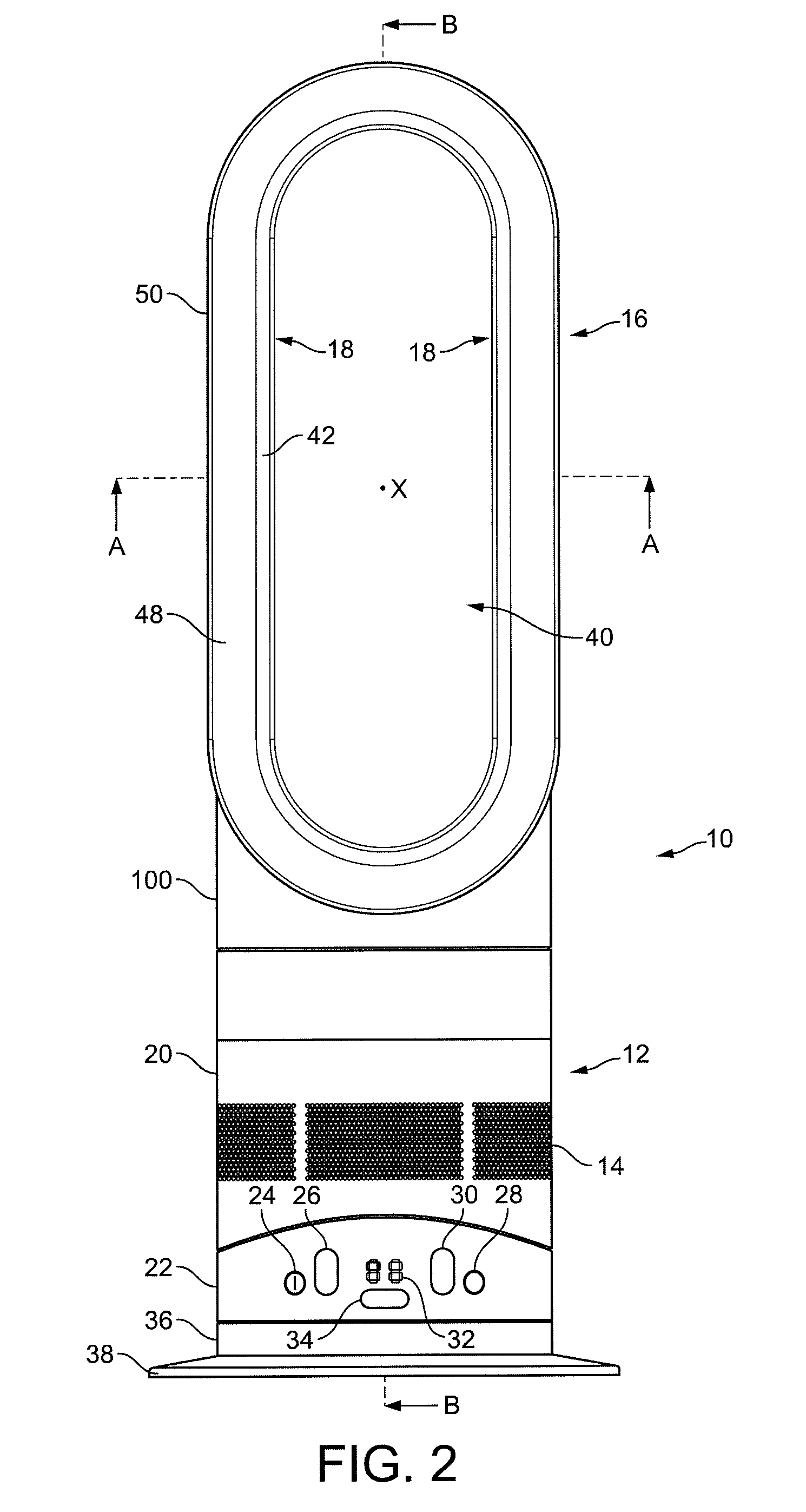Fan assembly
a technology of fan assembly and fan blade, which is applied in the direction of propellers, air heaters, propulsive elements, etc., can solve the problems of affecting the operation of the fan, affecting the user's comfort, and generating turbulent air flow, so as to reduce carbon debris and emissions, reduce operating speed, and efficient air flow generation
- Summary
- Abstract
- Description
- Claims
- Application Information
AI Technical Summary
Benefits of technology
Problems solved by technology
Method used
Image
Examples
Embodiment Construction
[0058]FIGS. 1 and 2 illustrate external views of a fan assembly 10. The fan assembly 10 is in the form of a portable fan heater. The fan assembly 10 comprises a body 12 comprising an air inlet 14 through which a primary air flow enters the fan assembly 10, and a nozzle 16 in the form of an annular casing mounted on the body 12, and which comprises at least one air outlet 18 for emitting the primary air flow from the fan assembly 10.
[0059]The body 12 comprises a substantially cylindrical main body section 20 mounted on a substantially cylindrical lower body section 22. The main body section 20 and the lower body section 22 preferably have substantially the same external diameter so that the external surface of the upper body section 20 is substantially flush with the external surface of the lower body section 22. In this embodiment the body 12 has a height in the range from 100 to 300 mm, and a diameter in the range from 100 to 200 mm.
[0060]The main body section 20 comprises the air ...
PUM
 Login to View More
Login to View More Abstract
Description
Claims
Application Information
 Login to View More
Login to View More - R&D
- Intellectual Property
- Life Sciences
- Materials
- Tech Scout
- Unparalleled Data Quality
- Higher Quality Content
- 60% Fewer Hallucinations
Browse by: Latest US Patents, China's latest patents, Technical Efficacy Thesaurus, Application Domain, Technology Topic, Popular Technical Reports.
© 2025 PatSnap. All rights reserved.Legal|Privacy policy|Modern Slavery Act Transparency Statement|Sitemap|About US| Contact US: help@patsnap.com



